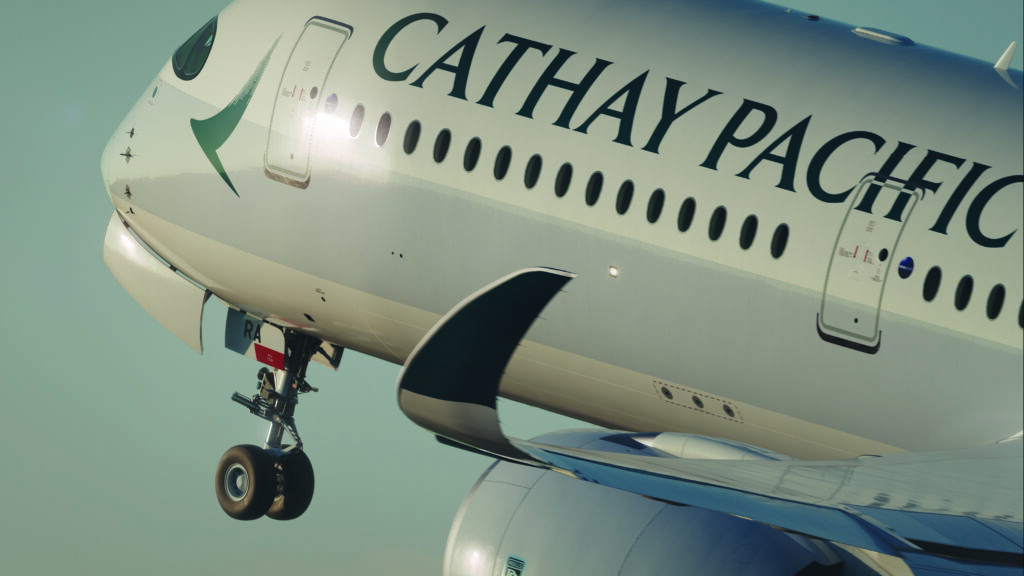
Hong Kong’s airlines were hit harder than most by the pandemic. Extended shutdowns and strict quarantine rules for crew left a once thriving sector in the doldrums. As regional rivals bounced back, local carriers were left playing catch up.
Cathay Pacific – the jewel in Hong Kong’s aviation crown – was not immune to the struggles.
Augustus Tang, its former CEO, discussed “challenges that are unique to Hong Kong” in rebuilding the airline. By the end of 2022, Cathay was operating just a third of its pre-crisis capacity. A year ago, it was hovering around 70% at a time when many competitors were at 90% or higher.
On Tuesday, the Cathay Group finally shook off the specter of its Covid-era woes. Publishing its traffic figures for December 2024, it confirmed that its “two-year rebuilding journey” is complete, with “incredible progress” made last year.
The focus, it added, “is now firmly on adding more flights and destinations to reinforce Hong Kong’s international aviation hub status.”
Key Numbers from Cathay’s 2024 Revival
The Cathay Group – which includes low-cost carrier HK Express as well as Cathay Pacific – carried more than 28 million passengers in 2024. That’s up 30.7% year-on-year.
The company is flying more aircraft, but they are also busier. The average load factor – a key industry metric for how many seats are occupied – increased by 3.6 percentage points compared to 2023 to 84.6%.
Lavinia Lau, Cathay’s Chief Customer and Commercial Officer, said premium cabins experienced high demand in the lead-up to the holiday season, “reflecting a surge in business-related travel before the end of the year.”
The group carried more than 100,000 passengers on eight separate days as 2024 came to a close.
Lau also highlighted “the strategic advantages of the Hong Kong hub to attract more transit passengers, in particular those traveling between the Chinese Mainland and cities around the world.”
As Skift has previously reported, many Western carriers have reduced their presence in Mainland China. Others, such as Qantas and Virgin Atlantic, have left the market altogether.
Hong Kong, along with other regional hubs such as Seoul and Taipei have benefited from flying more connecting traffic to and from Mainland China.
Resisting a Copy and Paste Strategy
Cathay boasts of “reaching 100% of our pre-pandemic flights from January 2025,” however the broader picture is more complex.
The carrier has not returned to multiple airports served in 2019 including Dublin, London Gatwick, and Washington Dulles. Rather than copy and paste its pre-crisis network, it is growing in alternative destinations, such as Rome, Munich, and Dallas-Fort Worth.
Six new locations are joining the route map in 2025, with Lau reiterating a goal of serving 100 destinations worldwide by the end of the year.
Discussing short-term travel trends, Lau added: “With the Lunar New Year approaching, we are seeing bookings accelerate as customers plan their holiday travel after the Christmas season. After the Lunar New Year peak, we expect leisure travel demand from Hong Kong to be quieter, with our flights carrying more transit passengers.”
A ‘Mind-Blowing’ First Class
The company plans to invest more than HK$100 billion (US$12.9 billion) over the next seven years as part of major modernization efforts. Leveraging a new third runway at its Hong Kong hub, the investment will cover planes, cabin interiors, digital programs, and sustainability initiatives.
Last August, Cathay Pacific signed a major deal with Airbus for 30 A330neo widebody planes. The new jets are due for delivery between 2028 and 2031. The wider Cathay Group now has more than 100 new aircraft in its delivery pipeline from Airbus and Boeing, with options for an additional 80.
Speaking exclusively to Skift in October, Cathay Chairman Patrick Healy reinforced the airline’s commitment to first class describing its upcoming cabin overhaul as “mind-blowing.”
“If you aspire to be one of the best – or ultimately, hopefully, – the best premium airline in the world, then having a world-leading first class is part of that. I think it’s difficult to claim that you’re really up there without an outstanding first class product.”
The renaissance of first class travel is one of Skift’s Megatrends for 2025. Read the full list here.
Airlines Sector Stock Index Performance Year-to-Date
What am I looking at? The performance of airline sector stocks within the ST200. The index includes companies publicly traded across global markets including network carriers, low-cost carriers, and other related companies.
The Skift Travel 200 (ST200) combines the financial performance of nearly 200 travel companies worth more than a trillion dollars into a single number. See more airlines sector financial performance.
